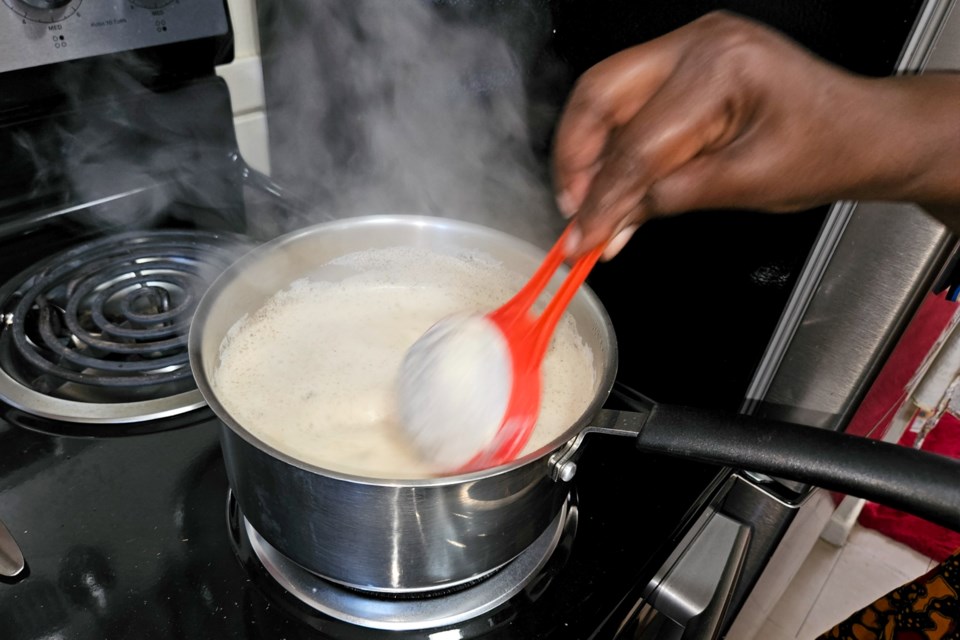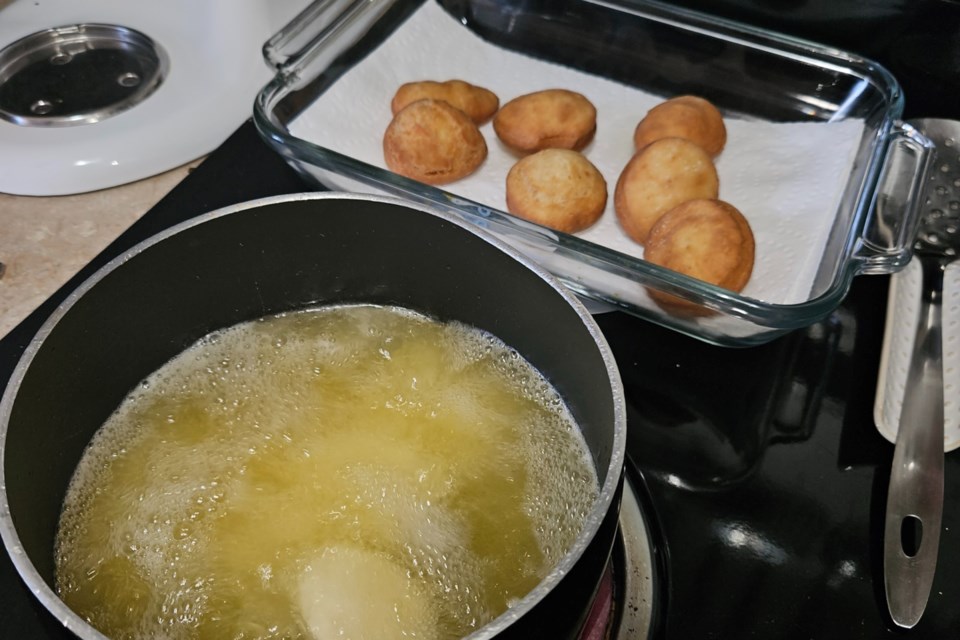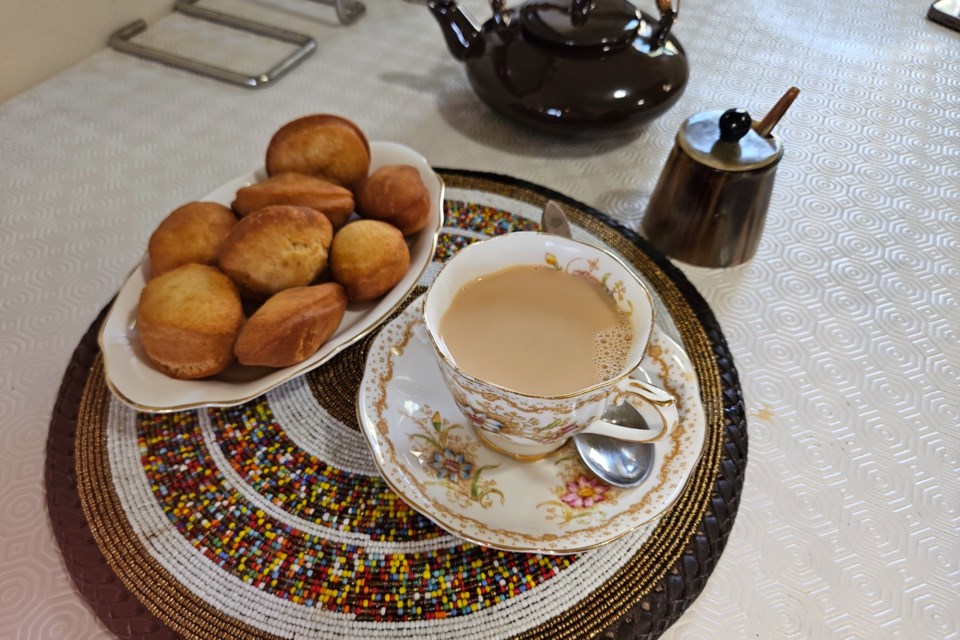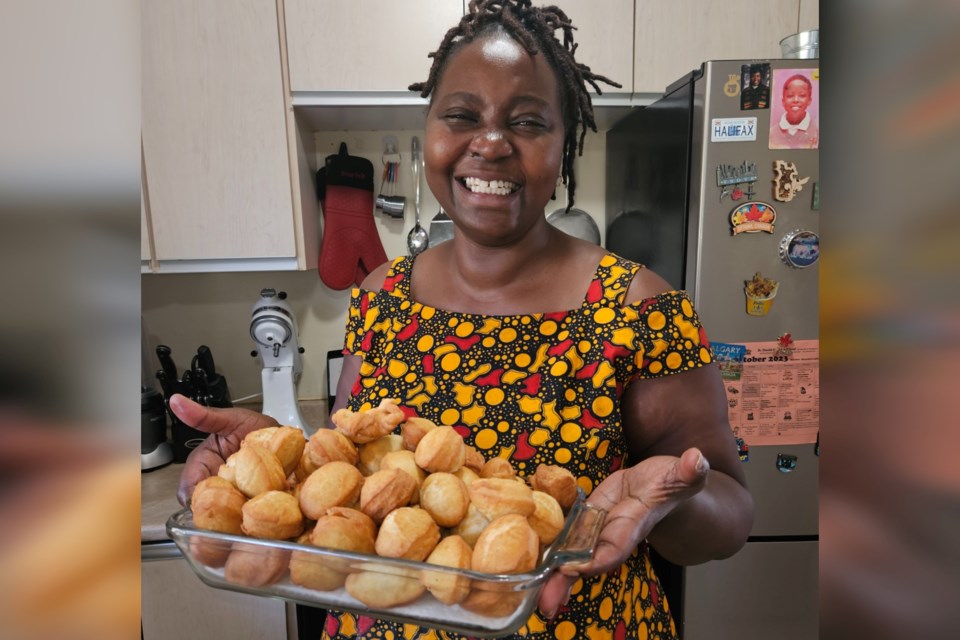To say Cathy Warega is an inspiration puts it mildly. She fled Kenya in 2019 with her husband and three children. Many of her family members and friends have perished in tribe and clan wars back home.
Despite this though, she continues to spread love, joy and welcome strangers to her home for tea here in Sudbury any chance she gets.

This month, Warega invited me to help make “mahamri”, an authentic donut-style snack that is always accompanied with chai, or Kenyan masala tea.
The delicacy originated in the Swahili culture of the coastal regions of Kenya and Tanzania. The lightly sweetened dessert is often paired with a Kenyan chai for its bold flavours.
As Warega explained, Kenya is a world leader in the production of black tea, with a lot of it grown in the fertile, red soils of the Kericho region.
While Warega loves to call Canada home now, she makes this comfort food whenever she gets a craving or misses her homeland.

She was born in Luo Land, in the Siaya Village of Kenya. Her children all grew up in the city of Nairobi where she sold real estate until they were forced to leave.
The process of making mahamri and chai takes about 30 minutes altogether before we can sit down to sip tea and enjoy the sweet treats.
When Cathy is not taking care of the children and working, she helps manage her son’s soccer team and helps lead an organization called LWICA, an acronym for Luo Women in Canada Association, a benevolent group that supports women from the Luo region who have immigrated to Canada.
“There are only so many people who speak the same language as me in Canada,” Warega said. “For example, no one in Sudbury speaks Luo. So I worked with a group of founding women to build a network across the country through What’s App.”
The idea was spurred out of boredom during the lockdowns in December 2020.
“We started with seven women and have grown to 88 now,” she said. “There is even an American chapter and every July, we get together somewhere in Canada to build each other up, support each other and celebrate our traditions.
“It’s called ‘nyoluoro’ or local community initiative,” she added.
To learn more about LWICA and the work Warega does with this organization to support women from her home country, visit LWICA.ca.
Want to try mahamri and chai at home? Here is Cathy’s recipe.

Mahamri
Ingredients
- 4 cups of flour
- 1 cup of tablespoons of brown sugar (depending on how sweet you wish your Mahamris to be)
- 1 teaspoon of instant yeast or baking powder
- 1 teaspoon of cardamom
- 1 teaspoon of ghee, butter or margarine
- 2 medium eggs – (optional)
- 1 cup of homo milk for kneading the dough
- 1/4 cup for kneading
- Grated green lemon peels
- Cooking oil for deep frying
Instructions
Mix the ingredients together with either clean hands or a mixture. Slowly add milk little at a time, as you knead the dough.
If you are using your hands to knead the dough, knead it for a minimum of 15-20 minutes until it’s soft, smooth and not sticky in either your hands or the walls of your bowl. Place the dough in a container and cover it with either a lid or a clean cloth. Let it rest and rise for at least 3-4 hours at room temperature. Using a dough cutter or a knife, divide the dough into 4-5 equal balls. Coat each ball of dough with flour, cover them again with a clean cloth for 15 minutes and let them puff/rise.
Sprinkle some flour on a clean surface and using a rolling pin, roll each ball of dough into a circle of about 6 inches. Move with the dough and if needed use more flour to prevent the dough from sticking on the surface and on the rolling pin.
Cut each rolled dough into 4 pieces.
Heat up the vegetable oil in a frying pan on a wok.
Test your oil by gently dropping a small piece of dough into the oil. If the dough stays at the bottom for a couple of seconds then rises to the surface then your oil is ready for frying, but if it rises up immediately after dropping it into the oil, then your oil is too hot and you need to reduce the heat otherwise your mahamris will burn and end up not been cooked inside
Fry five mahamri at a time (depending on the size of your pan or deep fryer.)
Use your strainer to splash oil over the top of the mahamris in order to help them puff up. As soon as you see the bottom side of the mahamris has turned light-gold brown, turn them over.
Keep turning the mahamris until they have a nice golden brown colour on both sides. Remove them from the hot oil and place them in a serving plate lined with paper towels to absorb any excess oil.
Repeat this process until all the dough pieces have been fried
Allow them to cool for a few minutes and enjoy.
Serve for breakfast or with a cup of typical Kenyan chai tea.
Kenyan Chai
Ingredients
- 2 cups of milk
- 1 cup water
- 2 Tb loose black tea leaves
- 2 tsp chai masala mix
- 1 tsp ground ginger
- 1 tsp cinnamon
- Sugar dish on the side
Directions
Put all ingredients in a saucepan, whisk and bring to a boil. Remove the pan from heat and let tea steep for five minutes. Strain and serve warm. A vegan version of this can be made by substituting coconut milk, oat milk, or your favourite alternative milk.
Anastasia Rioux is a writer in Greater Sudbury. Let’s Eat! is made possible by our Community Leaders Program.
